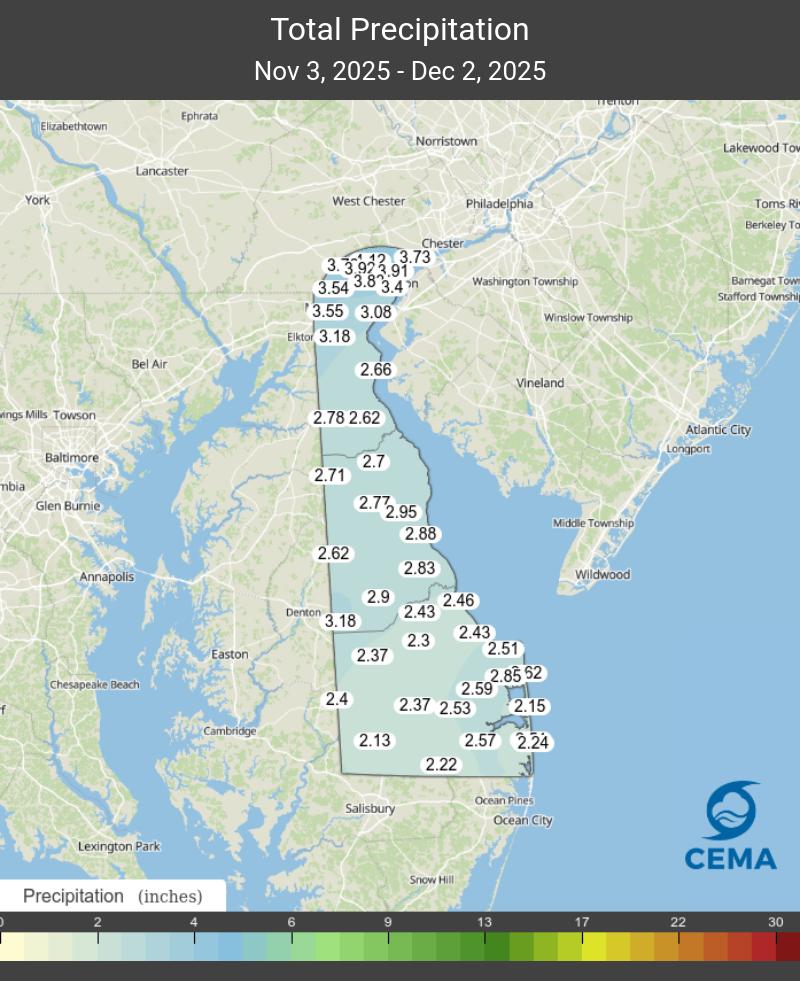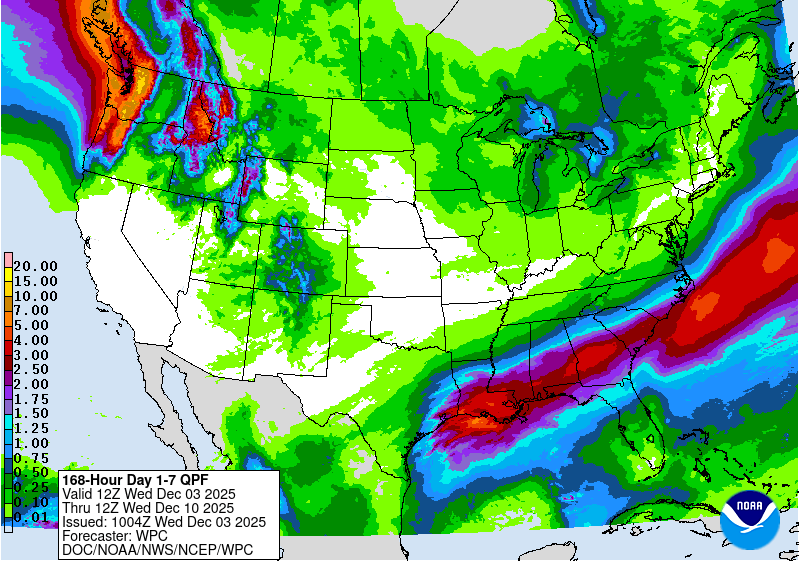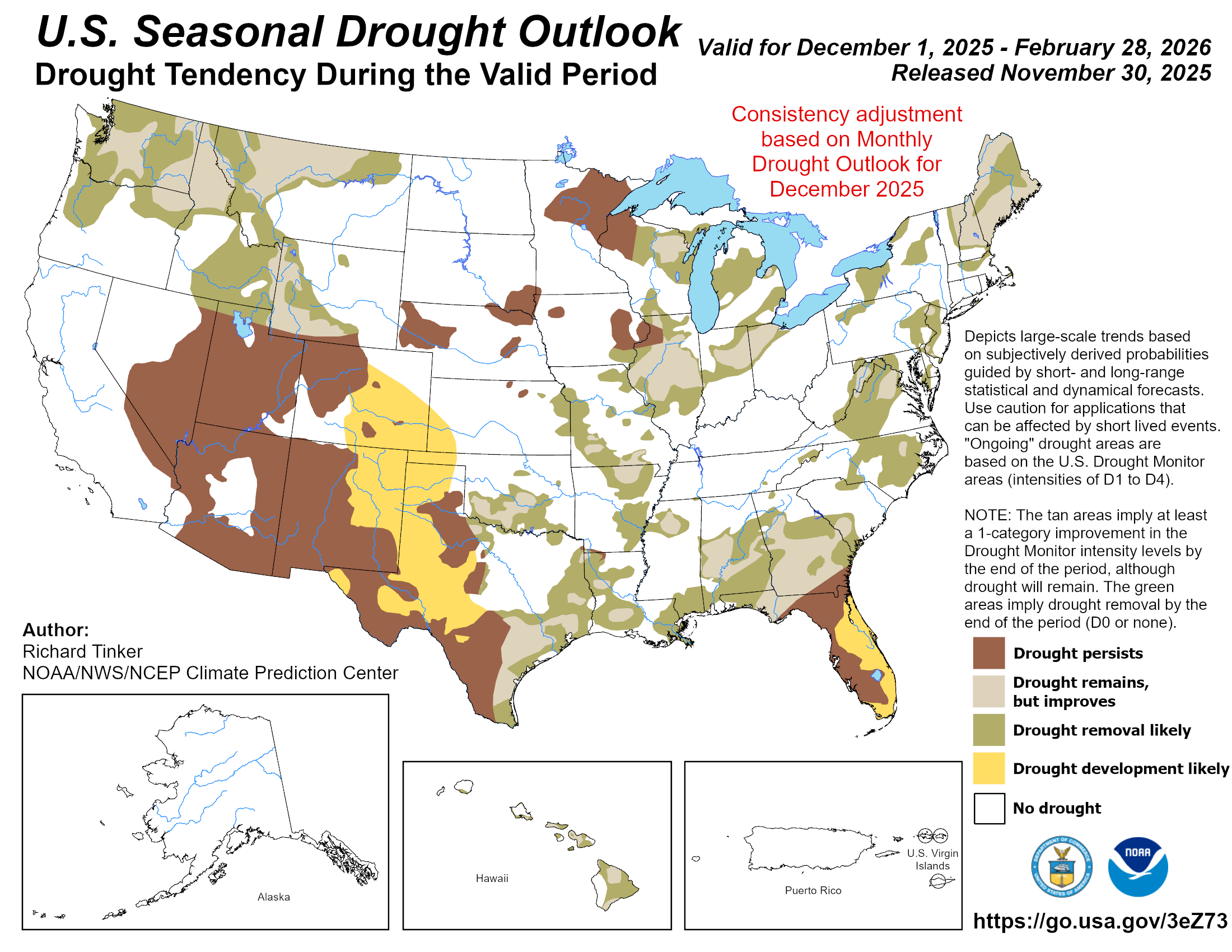Week of December 3rd, 2025
Posted on December 3, 2025Note: The next drought report will be on January 7th, 2025
Highlights:
- November precipitation was below normal, marking Delaware’s 4th straight month with below normal precipitation
- The state saw a small water balance surplus for November, though the water balance conditions varied statewide
- Soil moisture continues to be very low for this time of year.
- Decreasing streamflow on the Christina River and Delaware River have pushed the salt fronts farther upstream than normal for this time of year
- Groundwater conditions continue to decline, as wells in New Castle County dip below normal in November
- December is expected to be colder and wetter than normal, which would be a significant pattern change compared to our recent weather conditions
Statewide Drought Discussion
Dry to moderate drought conditions continue to persist throughout Delaware, though conditions are fairly stable at the moment.
Precipitation
Precipitation in November came in well below normal for most of Delaware, particularly in Sussex County where DEOS station totals ranged from 1.0 to 1.5 inches for the month (Figure 1). Normal statewide precipitation for Delaware in November is 3.27 inches, however, the DEOS Network average precipitation was only 1.85 inches, or about 57% of normal.
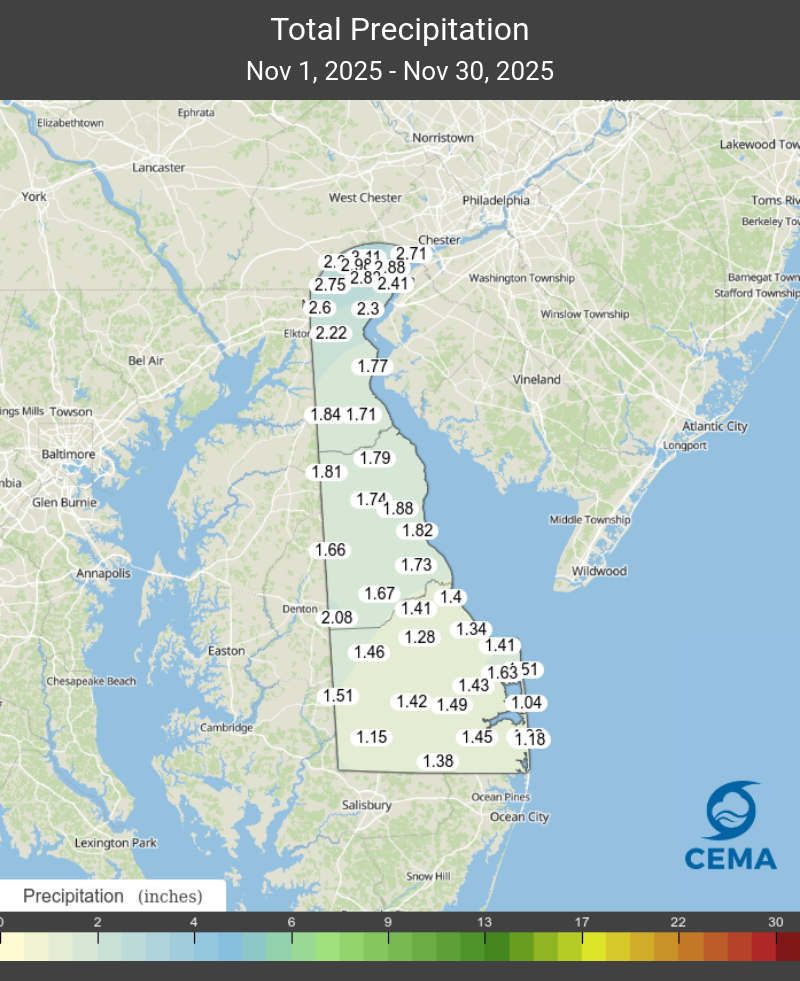
This marks the fourth consecutive month with below normal precipitation for Delaware, and is the longest streak of below normal monthly precipitation so far this year. Through November 30th, Wilmington is now 4.23 inches below normal, while Georgetown is 0.42 inches above normal through the first eleven months of 2025.
Temperature/Evapotranspiration
Water balance conditions were mixed across Delaware in November. While northern Delaware generally saw a surplus in P-ET (i.e., Precipitation minus Evapotranspiration), southern Delaware saw deficits in P-ET (see Figure 2).
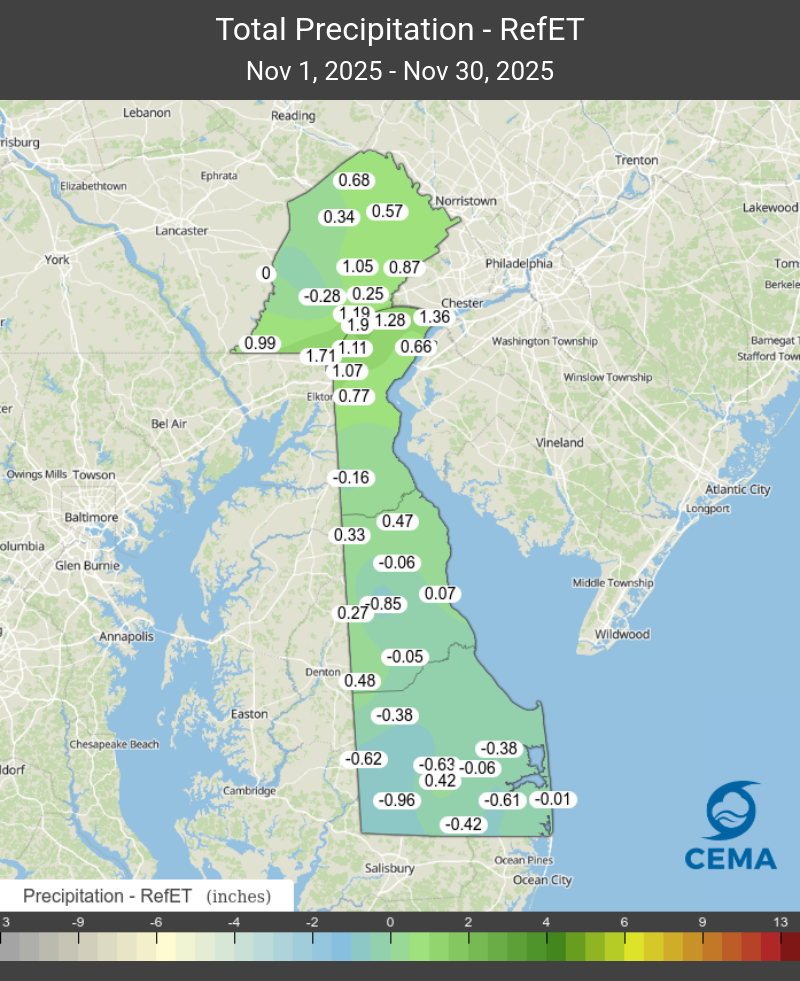
Overall, the state saw surplus water balance conditions, which is typical for November. Assuming precipitation remains at least half of normal during the coming months, the state should continue to experience surplus conditions through the winter and early spring, which will help us recover from the recent dry conditions we’ve been experiencing.
Soil Moisture
With limited precipitation and low evapotranspiration rates, soil moisture conditions in the top meter of soil have remained stable over the last few weeks. Unfortunately, that still means the entire state is experiencing soil moisture conditions at or below the 20th percentile for this time of year. Figure 3 also shows that most of Delaware south of Dover currently has near record low soil moisture conditions (going back to 2010).
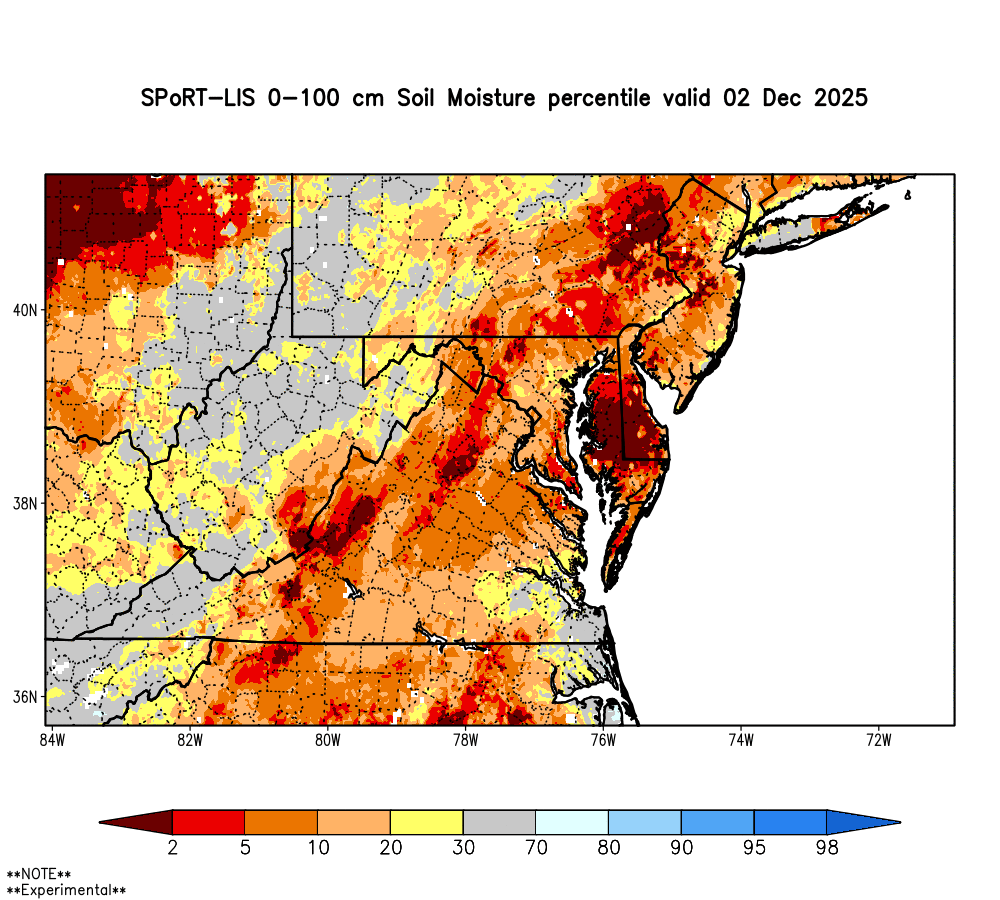
Streamflow
November continued the pattern of dry weather that began in early fall, with many indicators—streamflow, groundwater levels, and chloride concentrations—reflecting limited rainfall and reduced freshwater availability across the state. These conditions have implications for water supply, water quality, and overall ecosystem health as Delaware moves into the winter season.
Most USGS streamgages in Delaware recorded flows below the historical median, with many gages in the 25th percentile or lower, and a number of them in the 10th percentile or lower on various dates in late November The low streamflow percentiles reflect limited rainfall during the month (and antecedent dry conditions). In northern New Castle County, low flows limit the natural dilution of chlorides that encroach from the Delaware River, affecting water quality and increasing challenges for surface-water suppliers. Unless northern Delaware experiences more widespread and consistent rainfall during December, the below-normal flows will persist into the winter, which will warrant continued monitoring of regional hydrologic conditions. Further south in Kent and Sussex Counties, streamflows are also well below normal, continuing a trend that started in October.
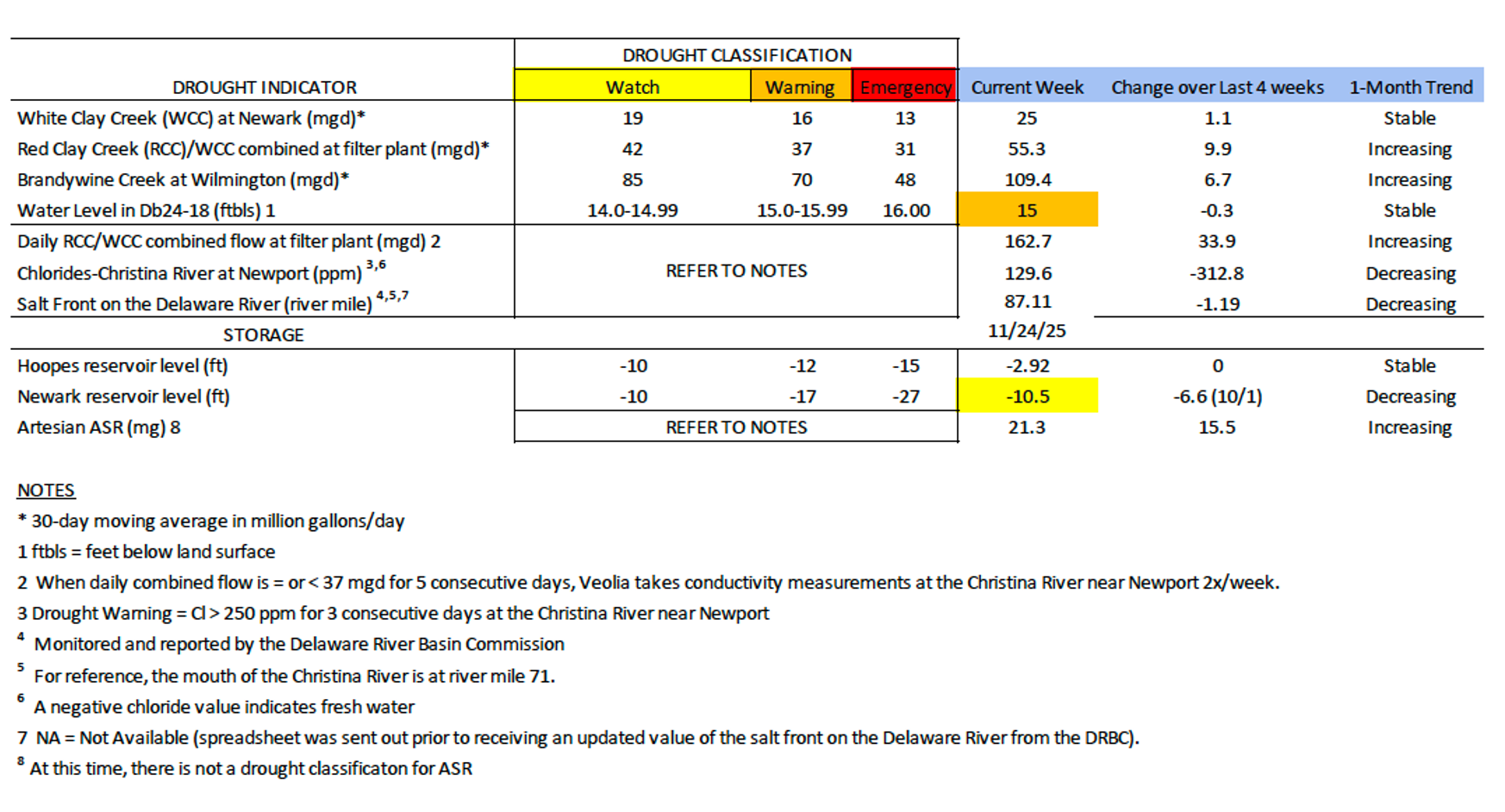
Chlorides
Recent precipitation has diluted chloride levels in the Christina River near Newport to 129 ppm after reaching a high of 1165 ppm at the end of October. This decrease is largely due to increased river flows in recent days, which have allowed fresh water to dilute the tidal saltwater, pushing the chlorides further downstream toward the mouth of the Christiana River. Without rainfall to continue dilution, chloride concentrations may again increase to concentrations seen at the end of October. Elevated chloride levels can speed up the corrosion of pipes, bridges, and other infrastructure, leading to higher maintenance costs and a greater risk of damage. They also pose a threat to aquatic ecosystems, as fish, insects, and plants in freshwater streams are especially sensitive to changes in salinity.
On the Delaware River, the typical November median salt front position is around River Mile 70 (near the mouth of the Christina River), meaning the current location (approximately River Mile 85) is noticeably farther upstream than average for this time of year (the average location of the salt front during December is River Mile 69). Continued monitoring through the winter will help assess whether upcoming rainfall and river discharge push the salt front back downstream toward its usual seasonal position.
Groundwater
Because groundwater responds more slowly than streams, November low streamflows indicate stress on shallow water-table wells that may continue into winter if rainfall remains below normal.
Groundwater levels across Delaware showed mixed conditions in November, reflecting the effects of several dry months. In northern New Castle County, water levels in the unconfined (shallow) aquifer have continued to decline. A monitoring well just south of Newark (Db24-18) measured 15.02 feet below land surface, which is just below normal for this time of year (typically 12.8 to 14.9 feet below land surface).
Elsewhere in the state, groundwater conditions vary. A groundwater monitoring well in southern New Castle County (Hb12-05), which has been at the low end of normal since September, has fallen into the below normal range during these first few days in December. (Figure 4). A groundwater monitoring well in southwestern Kent County (Mc51-01a) has been declining steadily since late April and remains below the 5th percentile at 17.09 feet below land surface; potentially a new record low. In southeastern Sussex County, well Pf24-02 has remained within the normal range since May, with a brief period of above-normal levels in early August.
Low groundwater levels, such as those observed in parts of Kent County, can put stress on local water supplies and increase the potential for shortages if dry weather continues into the winter months. Continued monitoring will help track whether recharge improves with late fall and winter precipitation.
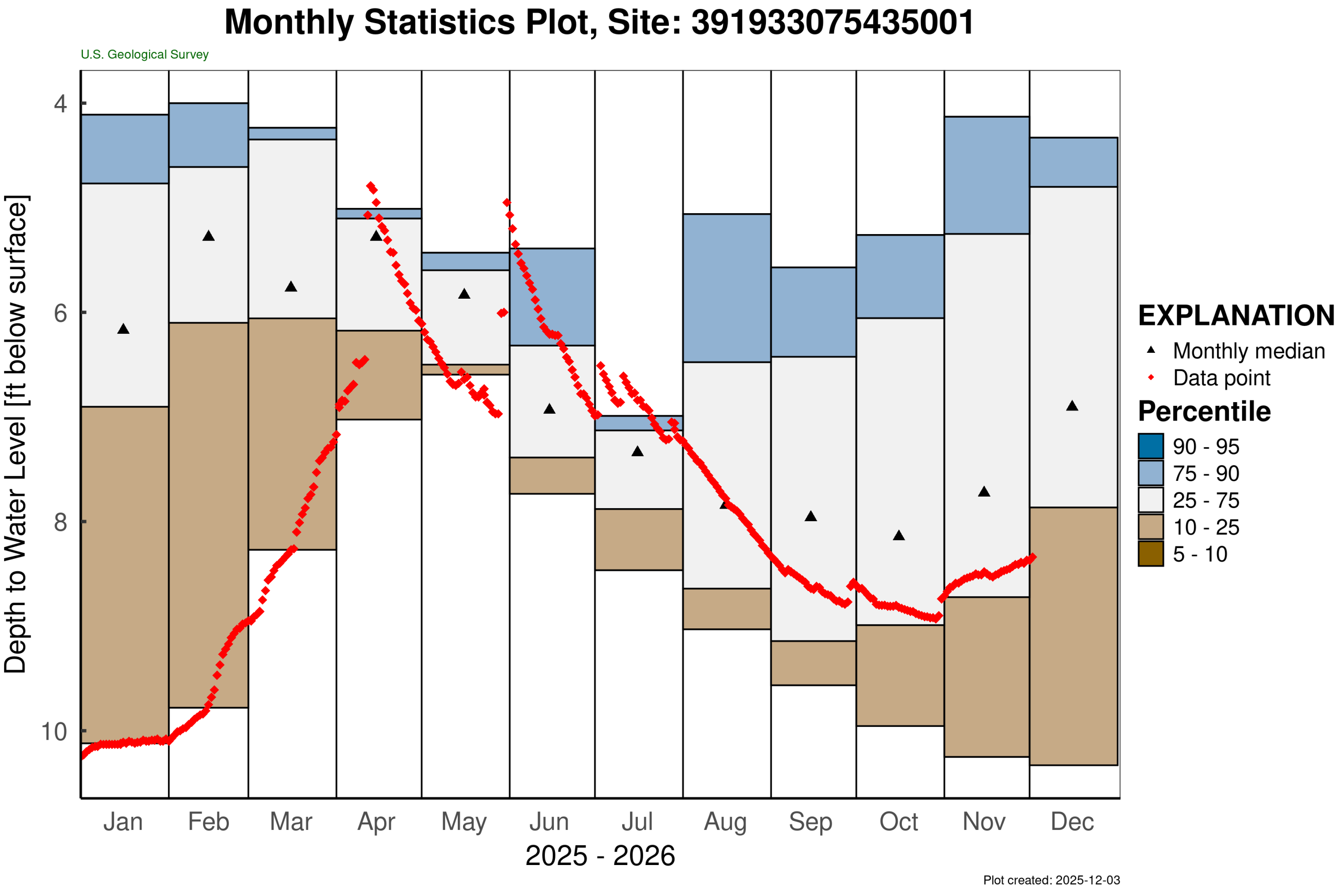
Weather and Climate Outlook
NOAA’s Climate Prediction Center (CPC) is expecting below normal temperatures and above normal precipitation throughout the month of December. This is mainly the result of an unusual dip in the northern (Canadian) jet stream for this time of year. This “dip” is allowing for colder than normal air to expand into the central and eastern United States. This has also created more favorable conditions for storm systems to track across the region. As a result, the CPC is expecting some improvement in drought conditions in December (Figure 5).
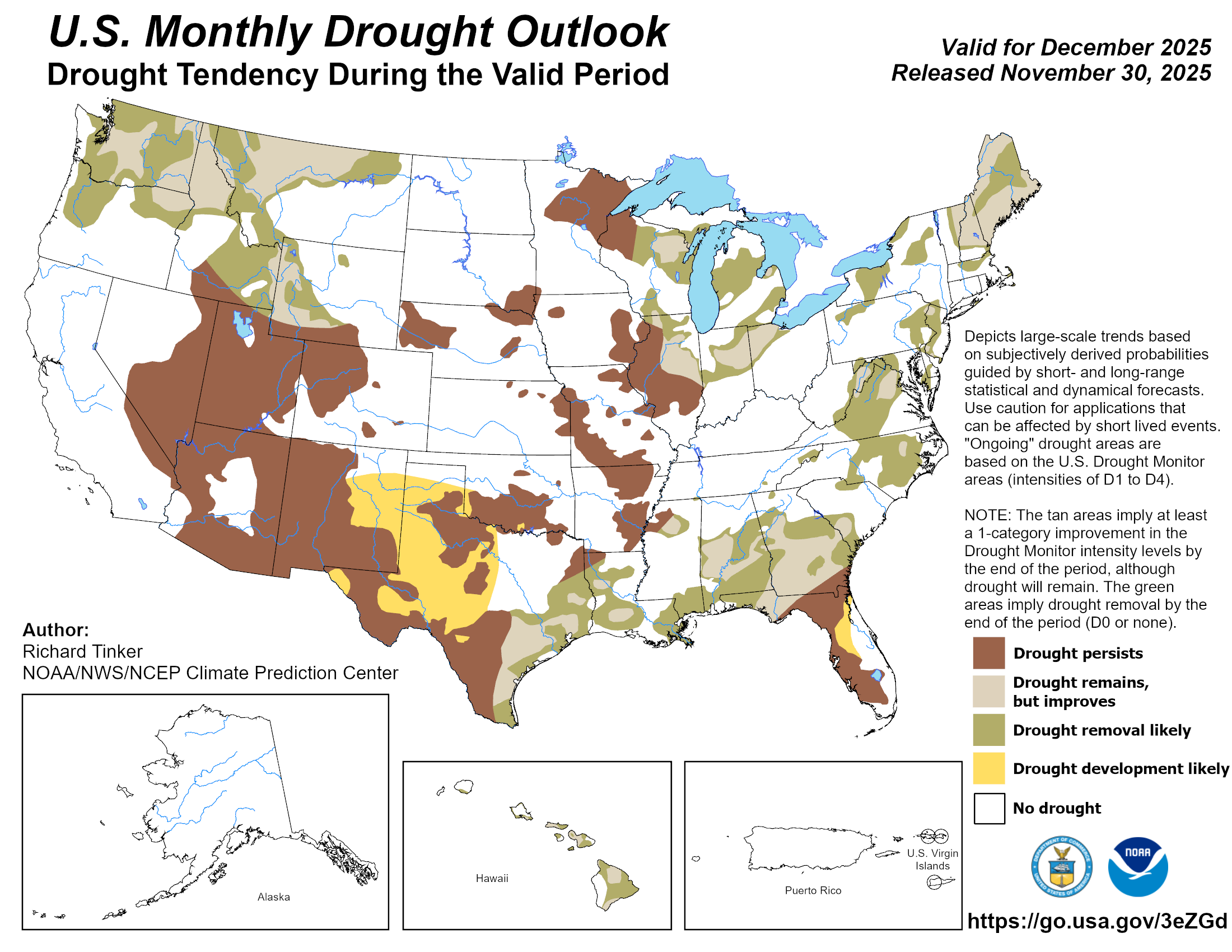
Looking at the upcoming winter, we’re still keeping an eye on the effect of the emergent La Nina ENSO phase on our weather conditions. While the tendency for our region is drier and warmer conditions during La NIna, as the CPC’s prediction for December shows, other factors can overwhelm the influence of La Nina on our weather. Hopefully the CPC outlook for December comes to fruition and we end our streak of below normal precipitation months at four.
Delaware Drought Status
Normal
Resources
- DGS Water Conditions Report
- US Drought Monitor
- NOAA Climate at a Glance
- Drought.gov DE site
- DE Water Supply Coordinating Council
- DRBC Drought Dashboard
- Surrounding State Pages:

